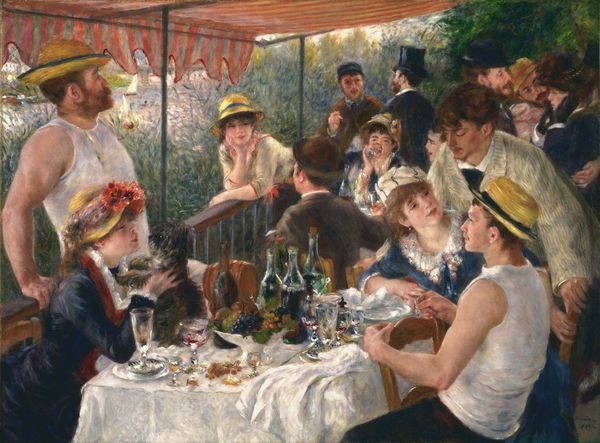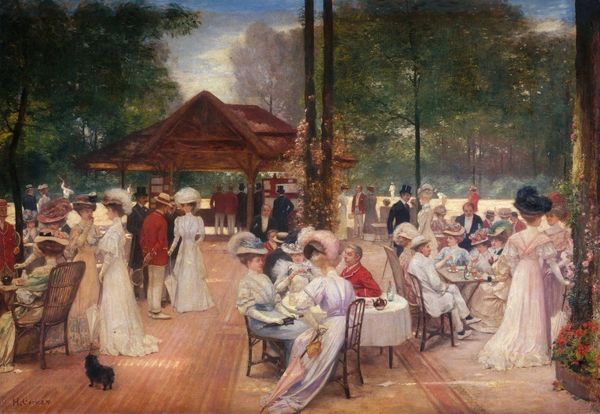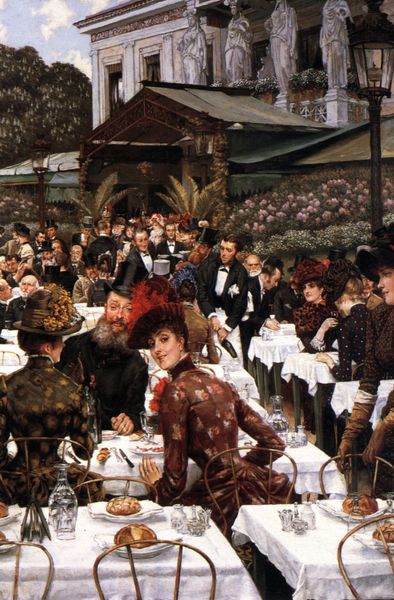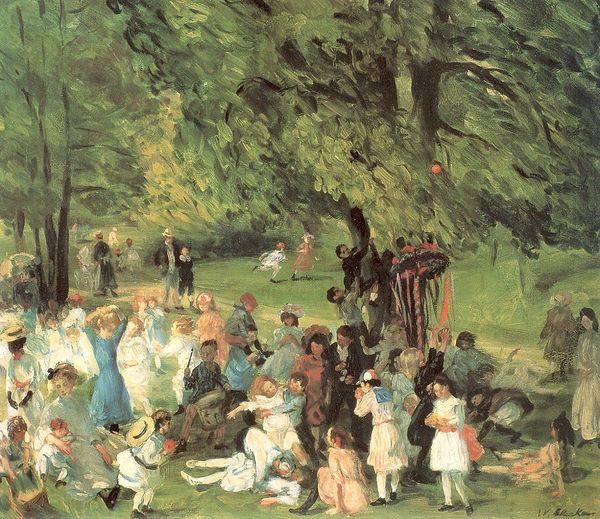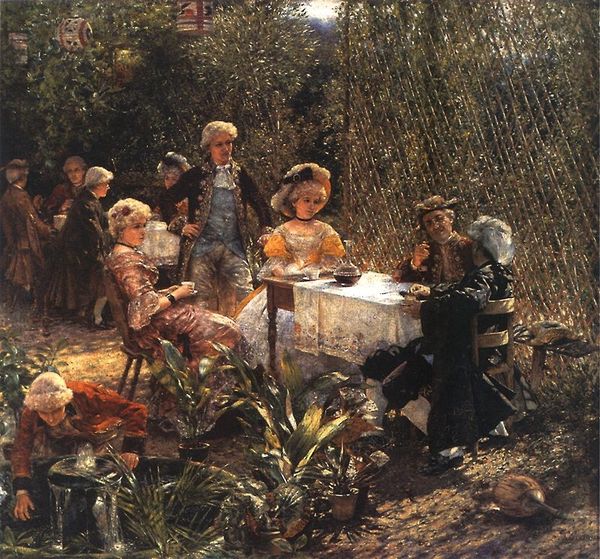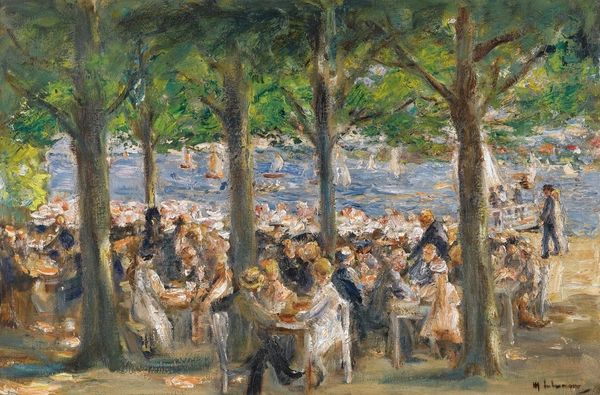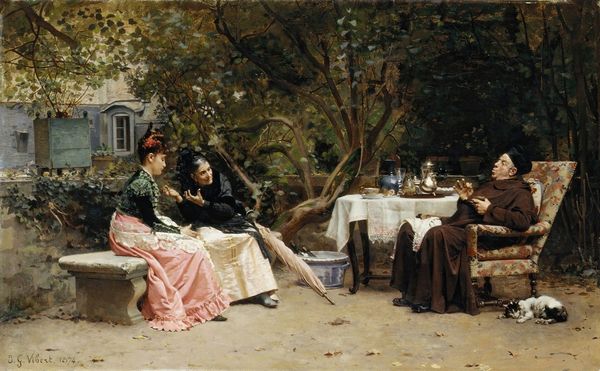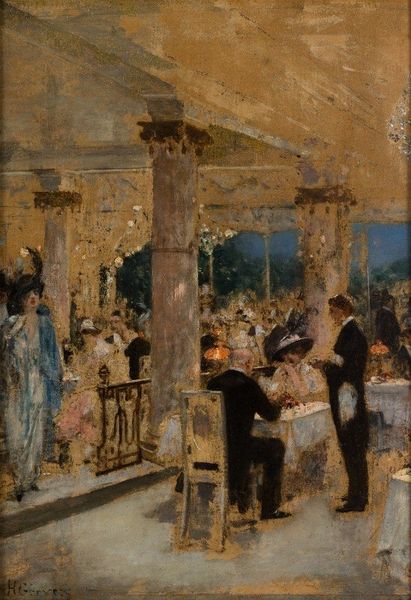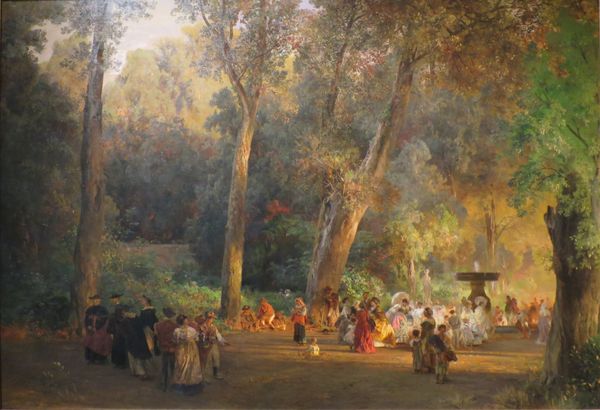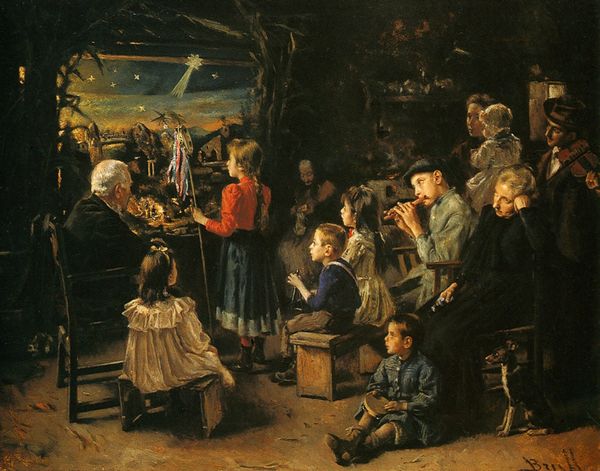
Copyright: Public domain
Curator: Let’s consider Max Liebermann’s "Beer Garden in Munich," completed in 1884 and now hanging here at the Neue Pinakothek. What are your immediate impressions? Editor: It feels undeniably…patriarchal, doesn’t it? So many figures gathered, mostly men. The scene conveys a specific kind of leisure afforded by a particular socio-economic class, painted during a time of significant social upheaval. Curator: That’s a powerful initial reading. Liebermann created this piece using oil paint, adopting a distinct Impressionistic style to capture a specific social scene in Munich. The setting is literally a public sphere, but access to it was often mediated by gender and class. Editor: Exactly. While it appears to depict a spontaneous, leisurely moment, there's a constructed reality beneath the surface. The gaze feels inherently masculine, positioning female figures, such as the women serving and caring for children in the foreground, primarily in relation to domestic and nurturing roles. How does the artistic technique itself reinforce or challenge these power dynamics? Curator: His technique seems almost radical, right? Broad brushstrokes create an almost unsettling sense of immediacy. Yet, this same technique paradoxically abstracts and even idealizes its upper-class subject. And given the rise of German Expressionism not long after, seeing those seeds being planted within this “leisurely” painting is so powerful. Editor: Absolutely, there is a strong visual tension. It invites scrutiny. Does Liebermann critique the burgeoning capitalist class enjoying the beer garden, or does he normalize their leisure? Where did Liebermann place himself in terms of socioeconomic status, and what motivated his social critiques in other works? Curator: Liebermann's own complex relationship to his affluent background certainly complicates any easy reading of social critique. "Beer Garden in Munich" feels representative of that complexity, inviting reflection on both its time and our own, while prompting dialogue on who gets to occupy public spaces—both physically and artistically. Editor: This painting certainly encourages me to critically assess our own historical context, the art world and society itself. Thanks for the insight, truly.
Comments
No comments
Be the first to comment and join the conversation on the ultimate creative platform.
